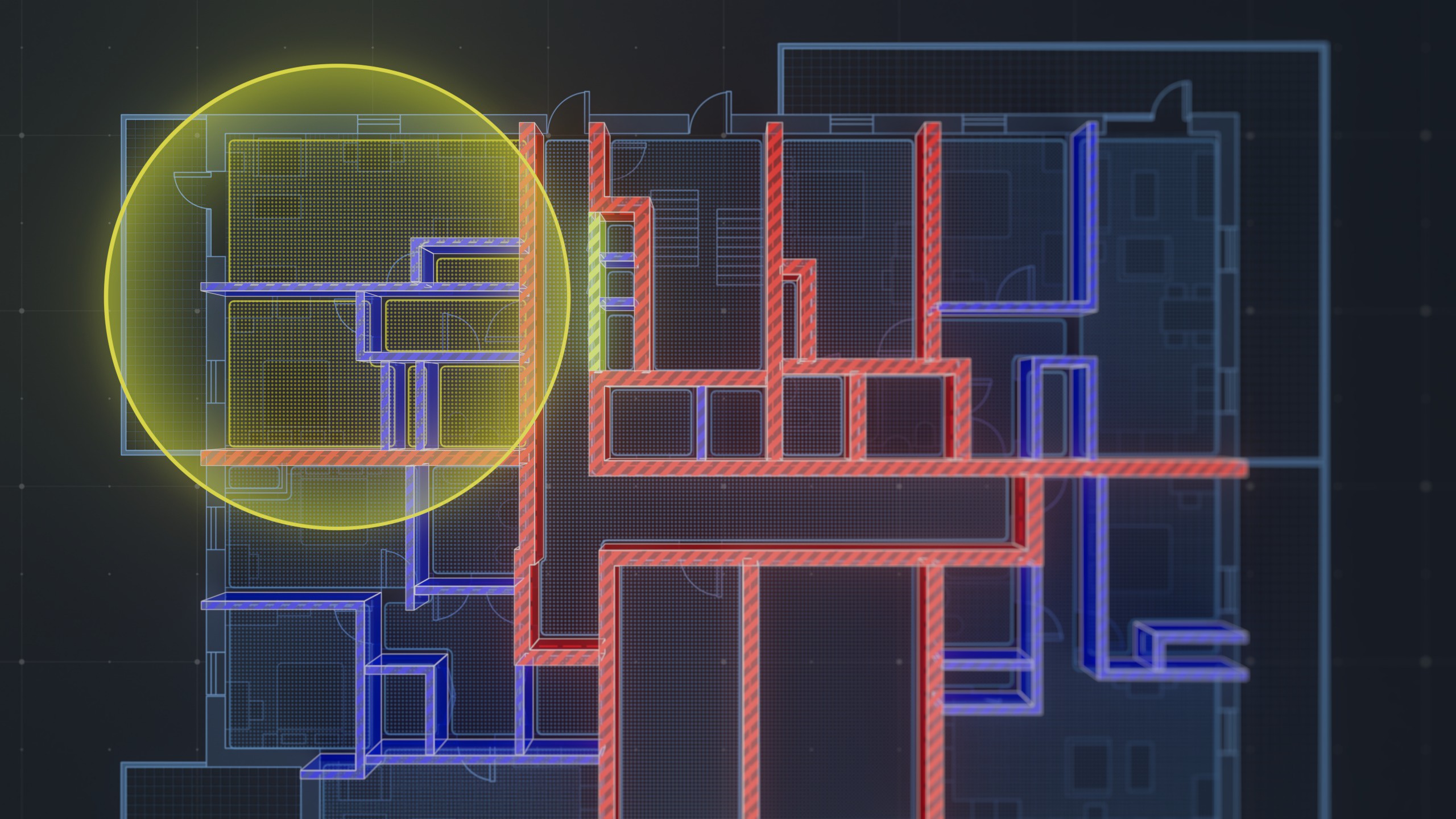Concrete is one of the most versatile and widely used building materials in the world. It is known for its strength, durability, and affordability. In modern architecture and construction, concrete finishes are playing an increasingly important role.
Concrete finishes offer a versatile range of aesthetic options, ranging from smooth and polished surfaces to textured and exposed designs. Additionally, these finishes serve practical purposes, enhancing concrete's durability by increasing resistance to wear, tear, and stains
The use of concrete in construction dates back to ancient times. However, it was not until the 19th century that concrete became a widely used building material. This advancement was made possible by the introduction of new technologies, including reinforced concrete and precast concrete methods.
During the 20th century, concrete became the cornerstone for constructing iconic global landmarks like the Empire State Building and the Golden Gate Bridge. It also found favor in Brutalist architecture, known for its distinctive raw and exposed concrete surfaces.
Today, concrete is used in a wide range of construction projects, from homes and schools to bridges and skyscrapers. Concrete finishes are also becoming increasingly popular, as architects and designers seek to create unique and innovative buildings.
This article will explore the latest trends and innovations in concrete finishes. We will discuss new technologies and materials that are being used to create more sustainable, durable, and aesthetically pleasing concrete finishes. We will also showcase examples of how these new finishes are being used in real-world projects.
Concrete finishes are significant in modern architecture and construction for a number of reasons.
- First, they can be used to create a wide range of aesthetic effects. This allows architects and designers to create buildings that are both functional and visually appealing.
- Second, concrete finishes can improve the performance of concrete. For example, polished concrete is more resistant to wear and tear than traditional concrete. This makes it a good choice for floors in high-traffic areas.
- Third, concrete finishes can be used to make concrete more sustainable. For example, recycled materials can be used in concrete mixtures to reduce the environmental impact of concrete production.
Overall, concrete finishes are a versatile and important part of modern architecture and construction. They can be used to create buildings that are both functional, aesthetically pleasing, and sustainable.
Understanding Concrete Finishes
Concrete finishes are a versatile and important part of modern architecture and construction. They can be used to create a wide range of aesthetic effects, improve the performance of concrete, and make concrete more sustainable.
Some of the most common types of concrete finishes include:
- Polished concrete: A smooth and reflective surface created by grinding the concrete with diamond abrasives.
- Stamped concrete: A type of concrete finish that is created by pressing patterns into freshly poured concrete.
- Exposed aggregate concrete: A type of concrete finish that exposes the aggregate (stones, gravel, or sand) in the concrete mixture.
- Broom finish concrete: A type of concrete finish that is created by dragging a broom across the surface of freshly poured concrete.
Concrete is a popular choice in construction for a number of reasons, including its strength, durability, affordability, and versatility.
Aesthetics is important in architectural design because it can affect the overall mood, feel, and functionality of a building. Concrete finishes play an important role in the aesthetics of architectural design by creating a wide range of aesthetic effects, adding warmth and character, and creating a sense of harmony and balance.
Here are some examples of how concrete finishes have been used to create stunning and innovative architectural designs:
- The Walt Disney Concert Hall in Los Angeles, California features a facade made of exposed aggregate concrete.
- The Millennium Bridge in London, England features a deck made of polished concrete.
- The Casa de Vidro in São Paulo, Brazil features a seamless transition between the interior and exterior of the building with polished concrete floors and exterior walkways.
Concrete finishes are a valuable tool that architects and designers can use to create buildings that are both functional and aesthetically pleasing.
Traditional Concrete and Its Environmental Impact
Traditional concrete production is a major contributor to climate change. It is estimated that the cement industry accounts for about 8% of global CO2 emissions. This is because the production of cement requires the heating of limestone to very high temperatures, which releases CO2 into the atmosphere.
In addition to CO2 emissions, traditional concrete production also consumes a lot of water and energy. It also produces other pollutants, such as dust and particulate matter.
Sustainable Concrete Practices
There are a number of sustainable concrete practices that can be used to reduce the environmental impact of concrete production. These include:
- Using recycled materials: Recycled materials, such as fly ash and silica fume, can be used to replace some of the cement in concrete mixtures. This reduces the amount of cement that needs to be produced, which in turn reduces CO2 emissions.
- Using eco-friendly binders: There are a number of new binders that are being developed that are more environmentally friendly than traditional cement. For example, geopolymer concrete is a type of concrete that uses fly ash and alkaline activators as binders. Geopolymer concrete has a lower carbon footprint than traditional concrete and is also more durable.
- Using energy-efficient curing methods: The curing of concrete is the process by which concrete gains its strength. Traditional curing methods require a lot of energy, but there are a number of new energy-efficient curing methods that are being developed. For example, solar-powered concrete curing systems can be used to reduce the energy consumption of concrete curing.
Real-Life Examples of Sustainable Concrete Projects
There are a number of real-life examples of sustainable concrete projects that are being built around the world. Here are a few examples:
- The Øresund Bridge, which connects Denmark and Sweden, is the world's longest bridge made of sustainable concrete. The bridge uses recycled materials and geopolymer concrete in its construction.
- The Port of Rotterdam in the Netherlands is using sustainable concrete to build a new quay wall. The concrete used in the quay wall is made with recycled materials and has a lower carbon footprint than traditional concrete.
- The University of California, Berkeley is building a new student housing complex made of sustainable concrete. The concrete used in the complex is made with recycled materials and has a lower carbon footprint than traditional concrete.
These are just a few examples of the many sustainable concrete projects that are being built around the world. Sustainable concrete is a promising new technology that has the potential to reduce the environmental impact of concrete production and construction.
Impact of Sustainable Concrete on the Environment
Sustainable concrete can have a significant impact on the environment. For example, the Øresund Bridge is estimated to reduce CO2 emissions by over 20,000 tons per year compared to a traditional concrete bridge.
The use of sustainable concrete can also help to conserve natural resources, such as water and limestone. It can also reduce pollution and improve air and water quality.
Overall, sustainable concrete is a promising new technology that has the potential to make a significant positive impact on the environment.
3D-Printed Concrete: Revolutionizing Architectural Possibilities
3D-printed concrete can be used to create intricate designs and complex structures that would be difficult or impossible to create using traditional construction methods. For example, 3D-printed concrete has been used to create:
- Sculptures: 3D-printed concrete sculptures have been created by artists all over the world. One example is the "Dream Pavilion" by Chinese artist Wenhao Chen. The Dream Pavilion is a complex and intricate sculpture that was 3D-printed from concrete.
- Functional structures: 3D-printed concrete has also been used to create functional structures, such as bridges and houses. For example, the world's first 3D-printed concrete house was built in the Netherlands in 2018.
Real-World Applications
- Housing: 3D-printed concrete is being used to build houses all over the world. For example, the ICON Vulcan is a 3D printer that can be used to build a 650-square-foot house in just 24 hours.
- Sculptures: 3D-printed concrete sculptures are becoming increasingly popular. For example, the "Dream Pavilion" by Chinese artist Wenhao Chen is a 3D-printed concrete sculpture that has been exhibited all over the world.
- Functional structures: 3D-printed concrete is also being used to create functional structures, such as bridges and roads. For example, the MX3D Bridge in Amsterdam is a 3D-printed concrete bridge that is expected to be completed in 2023.
3D-printed concrete is a revolutionary technology that is transforming the construction industry. It offers a number of advantages over traditional construction methods, including greater efficiency, less waste, and more customization options.
3D-printed concrete has the potential to revolutionize architectural design and construction. It can be used to create complex and intricate structures that would be difficult or impossible to create using traditional methods. 3D-printed concrete can also be used to create custom structures that meet the specific needs of the user.
Self-Healing Concrete: Paving the Way for Durability
Definition and Mechanism
Self-healing concrete is a type of concrete that can repair itself when it is cracked or damaged. This is done by embedding bacteria or other microorganisms in the concrete mixture. When the concrete is damaged, the bacteria or microorganisms produce enzymes that heal the cracks.
There are two main types of self-healing concrete:
- Bacteria-based self-healing concrete: This type of self-healing concrete contains bacteria that are embedded in the concrete mixture. When the concrete is damaged, the bacteria produce enzymes that heal the cracks.
- Chemical-based self-healing concrete: This type of self-healing concrete contains capsules filled with healing chemicals that are embedded in the concrete mixture. When the concrete is damaged, the capsules break open and the healing chemicals react to heal the cracks.
Self-healing concrete has a number of potential practical applications, including:
- Infrastructure repair and maintenance: Self-healing concrete can be used to repair and maintain infrastructure, such as bridges, roads, and dams. This can help to extend the lifespan of infrastructure and reduce maintenance costs.
- Construction in harsh environments: Self-healing concrete can be used to construct buildings and other structures in harsh environments, such as coastal areas and areas prone to earthquakes. This is because self-healing concrete is more resistant to damage from these types of environments.
- Precast concrete: Self-healing concrete can be used to produce precast concrete elements, such as beams and columns. This can help to improve the quality and durability of precast concrete elements.
There are a number of case studies of successful implementations of self-healing concrete in real projects. For example:
- In 2016, the world's first self-healing concrete road was built in the Netherlands. The road is made of concrete that contains bacteria that can heal cracks in the concrete.
- In 2018, the world's first self-healing concrete bridge was built in China. The bridge is made of concrete that contains bacteria that can heal cracks in the concrete.
- In 2020, the world's first self-healing concrete building was built in the United Kingdom. The building is made of concrete that contains bacteria that can heal cracks in the concrete.
Self-healing concrete offers a number of long-term benefits, including:
- Increased durability: Self-healing concrete is more durable than traditional concrete because it can repair itself when it is cracked or damaged. This can help to extend the lifespan of buildings and other structures made of self-healing concrete.
- Reduced maintenance costs: Self-healing concrete can help to reduce maintenance costs because it does not need to be repaired as often as traditional concrete.
- Improved sustainability: Self-healing concrete can help to improve sustainability because it can help to reduce the amount of concrete that needs to be produced and transported.
Self-healing concrete is a promising new technology that has the potential to revolutionize the construction industry. It offers a number of benefits, including increased durability, reduced maintenance costs, and improved sustainability. Self-healing concrete is still under development, but it is already being used in a number of real projects around the world.
In the future, self-healing concrete is expected to be used more widely in construction projects. This will help to extend the lifespan of buildings and other structures, reduce maintenance costs, and improve sustainability.
Emerging Trends in Concrete Finishes
The future of concrete finishes is bright, with a number of emerging trends that have the potential to revolutionize the construction and architecture industries. Two of the most exciting trends are smart concrete and responsive concrete.
Smart Concrete
Smart concrete is a type of concrete that contains sensors and other electronics that can monitor the condition of the concrete and collect data about its environment. This data can be used to improve the performance and safety of concrete structures.
For example, smart concrete can be used to monitor the temperature and humidity of concrete structures, which can help to prevent cracking. Smart concrete can also be used to monitor the structural integrity of concrete structures, which can help to identify potential problems early on.
Responsive Concrete
Responsive concrete is a type of concrete that can change its properties in response to external stimuli. For example, responsive concrete can be used to create concrete structures that can change color in response to sunlight or temperature. Responsive concrete can also be used to create concrete structures that can self-repair when they are damaged.
Responsive concrete is still in its early stages of development, but it has the potential to revolutionize the way that concrete structures are designed and built.
Impact on Construction and Architecture
Smart concrete and responsive concrete have the potential to revolutionize the construction and architecture industries. Smart concrete can help to improve the performance and safety of concrete structures, while responsive concrete can be used to create more sustainable and adaptive concrete structures.
For example, smart concrete can be used to build bridges that can monitor their own condition and alert engineers to potential problems. Responsive concrete can be used to build buildings that can change their properties in response to the weather, which can help to reduce energy consumption.
Societal and Environmental Impacts
Smart concrete and responsive concrete have the potential to have a positive impact on society and the environment. Smart concrete can help to improve the safety of public infrastructure and make buildings more energy-efficient. Responsive concrete can help to reduce the need for concrete repairs and extend the lifespan of concrete structures.
Overall, smart concrete and responsive concrete are two of the most exciting emerging trends in concrete finishes. These technologies have the potential to revolutionize the construction and architecture industries and create more sustainable, durable, and adaptive concrete structures.
Here are some specific examples of how smart concrete and responsive concrete could be used in the future:
- Smart concrete could be used to build roads that can monitor their own condition and alert transportation officials to potential problems, such as potholes or cracks.
- Responsive concrete could be used to build buildings that can change their color in response to sunlight, which could help to reduce energy consumption for cooling and heating.
- Smart concrete could be used to build bridges that can monitor their own structural integrity and alert engineers to potential problems, such as corrosion or fatigue.
- Responsive concrete could be used to build self-repairing buildings that can heal cracks and other damage on their own.
These are just a few examples of the many potential applications of smart concrete and responsive concrete. As these technologies continue to develop, we can expect to see even more innovative and creative uses for them.




.png)